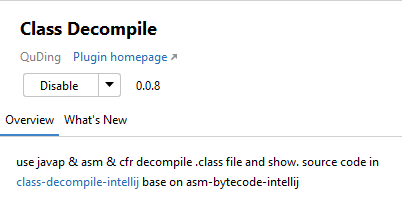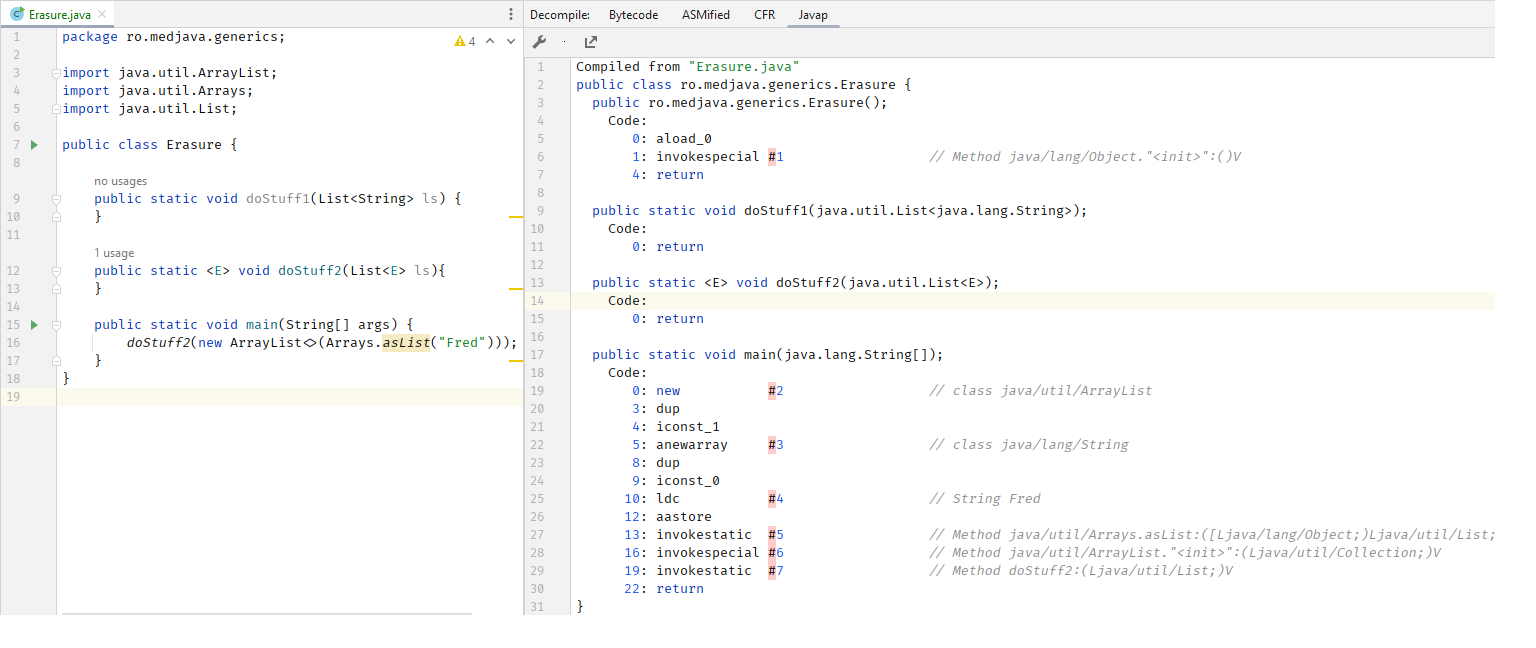Table of Contents
JDK's javap tool
What is it
The javap command disassembles one or more class files.
It displays details about the internal structure of Java classes.
It allows us to inspect compiled Java code to better understand how Java works at the bytecode level.
“javap” displays information such as:
- The names and types of methods in the class.
- The method signature, which includes the method name, parameter data types, and return type.
- The byte code of the method, which represents the bytecode instructions used by the JVM.
- The fields of the class, including their names and types.
When to use it
- To better understand how Java code works at the bytecode level.
- To check method signatures and parameter data types and return value types.
- To check if a class contains the expected fields and methods.
- To check for errors or performance issues in a program.
Example of usage
Given the following class:
package ro.medjava.generics; import java.util.ArrayList; import java.util.Arrays; import java.util.List; public class Erasure { public static void doStuff1(List<String> ls) { } public static <E> void doStuff2(List<E> ls){ } public static void main(String[] args) { doStuff2(new ArrayList<>(Arrays.asList("Fred"))); } }
We want to check if all the generic types are erased after the compilation.
Be sure that the javap tool is added to the PATH environment variable before using it.
It is located in the JAVA_HOME\bin folder.
Command to disassemble the Erasure class is:
C:\JavaProject\src\main\java> javap -cp ../../../target/classes -c ro.medjava.generics.Erasure
-c parameter is used to display the disassembled code.
Result:
public ro.medjava.generics.Erasure();
Code:
0: aload_0
1: invokespecial #1 // Method java/lang/Object."<init>":()V
4: return
public static void doStuff1(java.util.List<java.lang.String>);
Code:
0: return
public static <E> void doStuff2(java.util.List<E>);
Code:
0: return
public static void main(java.lang.String[]);
Code:
0: new #2 // class java/util/ArrayList
3: dup
4: iconst_1
5: anewarray #3 // class java/lang/String
8: dup
9: iconst_0
10: ldc #4 // String Fred
12: aastore
13: invokestatic #5 // Method java/util/Arrays.asList:([Ljava/lang/Object;)Ljava/util/List;
16: invokespecial #6 // Method java/util/ArrayList."<init>":(Ljava/util/Collection;)V
19: invokestatic #7 // Method doStuff2:(Ljava/util/List;)V
22: return
As we can see in the parameter list of doStuff1 and doStuff2 methods, the generic types survived after compilation.
Some consistency checking information still remains in the binary.
But in the main method, the array list passed to the doStuff2 method does not contain any generic type after compilation.


